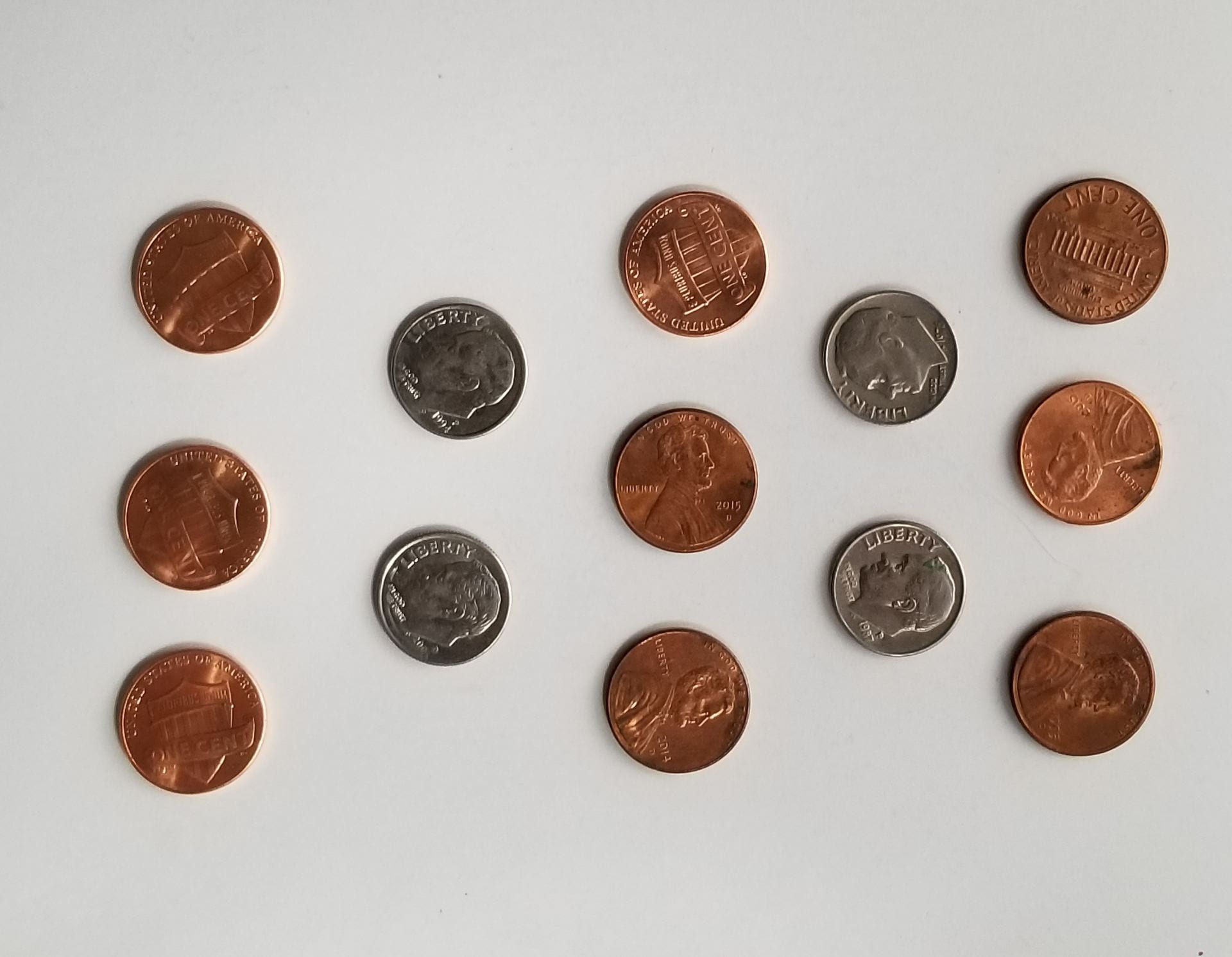Image of the Week: Asking How Many? with Coins
February 27, 2022Asking How Many? with Coins
How many do you see in the Image of the Week? This question is deliberately ambiguous to open up multiple ways of interpreting the image. If students think of the coins as individual objects, they might see three columns (or rows) of 3 and two columns (or rows) of 2, and say 13. Others might differentiate between the two types of coins and say they see 4 (dimes) or 9 (pennies). For young children, this is worthy decomposition, subitizing, and composition work as they attend to the structure of the coins in an array.
But there is, of course, another layer entirely here – not just how many coins, but how many cents? This question gets at the value of the coins and creates an abstraction that is conceptually challenging. How can one object, like a dime, be counted as more than one (in this case, as 10)? Students have to believe that the coin represents more than they can see concretely, and then, of course, they have to remember how many cents each coin represents. In our world where physical money is used less and less frequently, students may not have much experience collecting or counting coins. But getting that experience is important, not for learning to navigate money, but because it introduces a context to do some complex mathematical think.
Consider the work that student have to do to count a group of coins like in our image of the week. They need to:
- Understand that each coin type represents a different number of cents.
- Decide how to order their counting. Will they count left to right? Top to bottom? By coin type? Which types of coins to count first?
- Decide whether to count each group of coins and join them or count on. For instance, in this case students could count 40 cents in dimes and 9 cents in pennies and join, or count continuously: 10, 20, 30, 40, 41, 42, …
- If they count on, then students have to switch between units of skip counting, from counting by 10s to counting by 1s (or 5s or 25s, depending on the group).
- If they count each group and join, they will need to grapple with place value as a tool for putting 40 and 9 together.
No matter how students tackle the task of counting a mix group of coins, they must coordinate multiple big mathematical ideas. When discussing students’ strategies for this task, or any like it, be sure to highlight all the decisions student made, ask why they made them, and compare the different approaches. And give students many opportunities to work with and count coins – we have dozens of coin-counting activities to choose from.
And we invite you to follow us on Twitter! Tweet us the fascinating ideas you students have about our activities or how you’re trying these activities in your space. We can’t wait to hear from you!
To multiplicity, cheers!
Jen Munson and the multiplicity lab group
Read the Archive
Get the Image of the Week
Each week we bring you a new image and activity you can do with your students tomorrow, and we spotlight a feature of the mathematical work that we think is important for students’ learning and your teaching.
Stay connected and see what's new.

